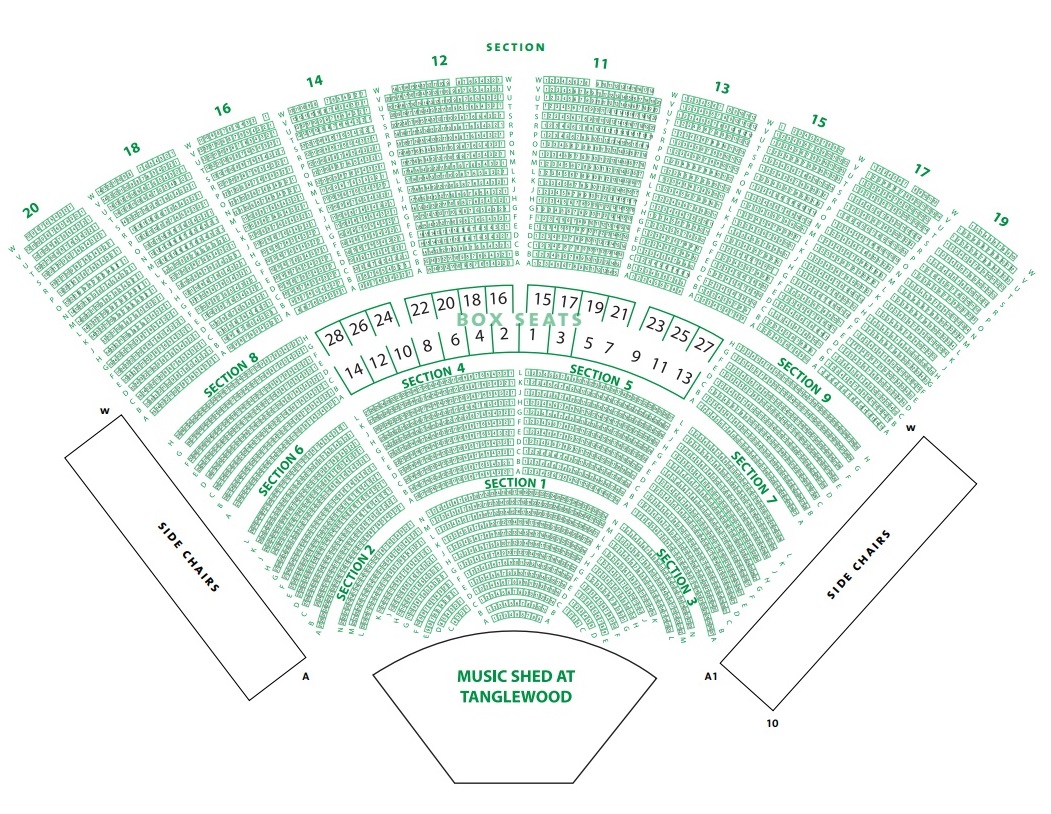Auteur/autrice : C&A HD
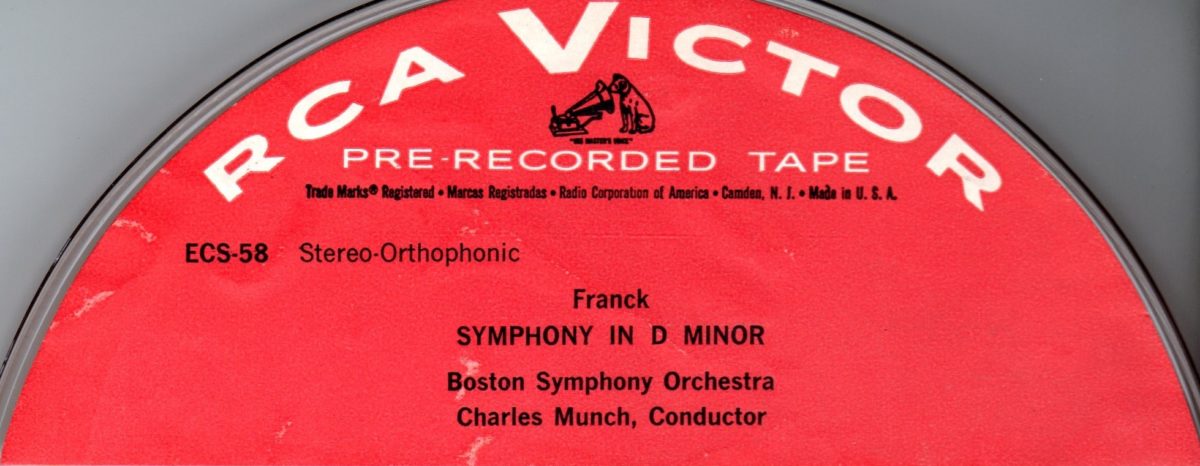
I: Lento-Allegro non troppo – II: Allegretto – III: Allegro non troppo
Charles Munch – Boston Symphony Orchestra
Symphony Hall – March 11, 1957
Source: Bande 2 pistes /2-track Tape: RCA ECS-58
Charles Munch était le chef de l’inspiration spontanée: il y avait beaucoup de différences entre ses interprétations d’une même œuvre. Par contre, la passion qu’il mettait dans ses concerts ne se retrouvait qu’en partie dans ses disques, souvent considérés comme moins satisfaisants.
Sa personnalité le conduisait également à des exagérations enthousiasmantes en concert, mais parfois discutables à l’audition des enregistrements publics. C’est le cas de la Symphonie de Franck, pour laquelle on dispose d’une bande captée en concert le 9 mars 1957, soit deux jours avant l’enregistrement officiel (coffret «Charles Munch conducts A Treasury of French Music» 6CD WHRA-6027). En public, Munch pousse de manière spectaculaire les contrastes de tempi et de dynamique avec pour résultat paradoxal des minutages beaucoup plus élevés*, alors que l’enregistrement de studio, tout en conservant la patte caractéristique de Munch et son inspiration, serait à choisir de préférence.
L’année 1957 voit chez RCA une amélioration de la prise de son stéréophonique, avec l’utilisation de trois microphones (gauche, droite et centre) et d’une bande magnétique trois pistes. Pour une écoute à deux canaux, les signaux des micro de gauche et de droite sont affectés à chacun des canaux respectifs comme pour une stéréo normale, et le signal du micro central est ajouté aux deux canaux. Cette technique, qui sera également adoptée sous peu par Columbia permet d’améliorer la définition ainsi que la répartition spatiale pour une écoute plus proche du concert. Elle est décrite en détail par Bert Whyte dans sa recension de cette bande ECS-58 dans «Hi-fi & Music Review» de février 1958 (page 91). Pour la lire , cliquer ICI.
*Concert: I: 18’; II: 9’53; III:10’28 – Enregistrement RCA: I: 16’55; II: 9’23; III: 10’10
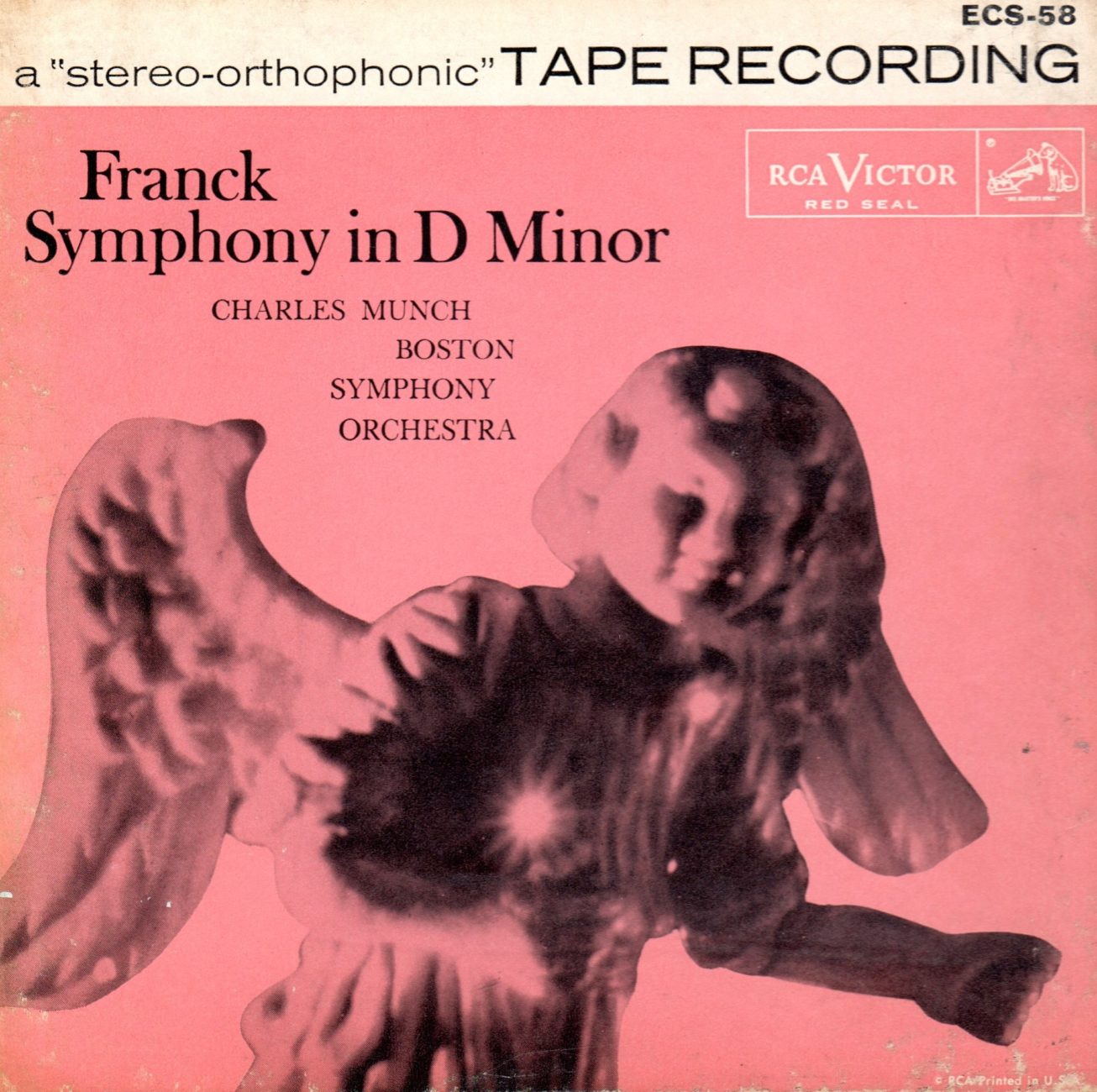
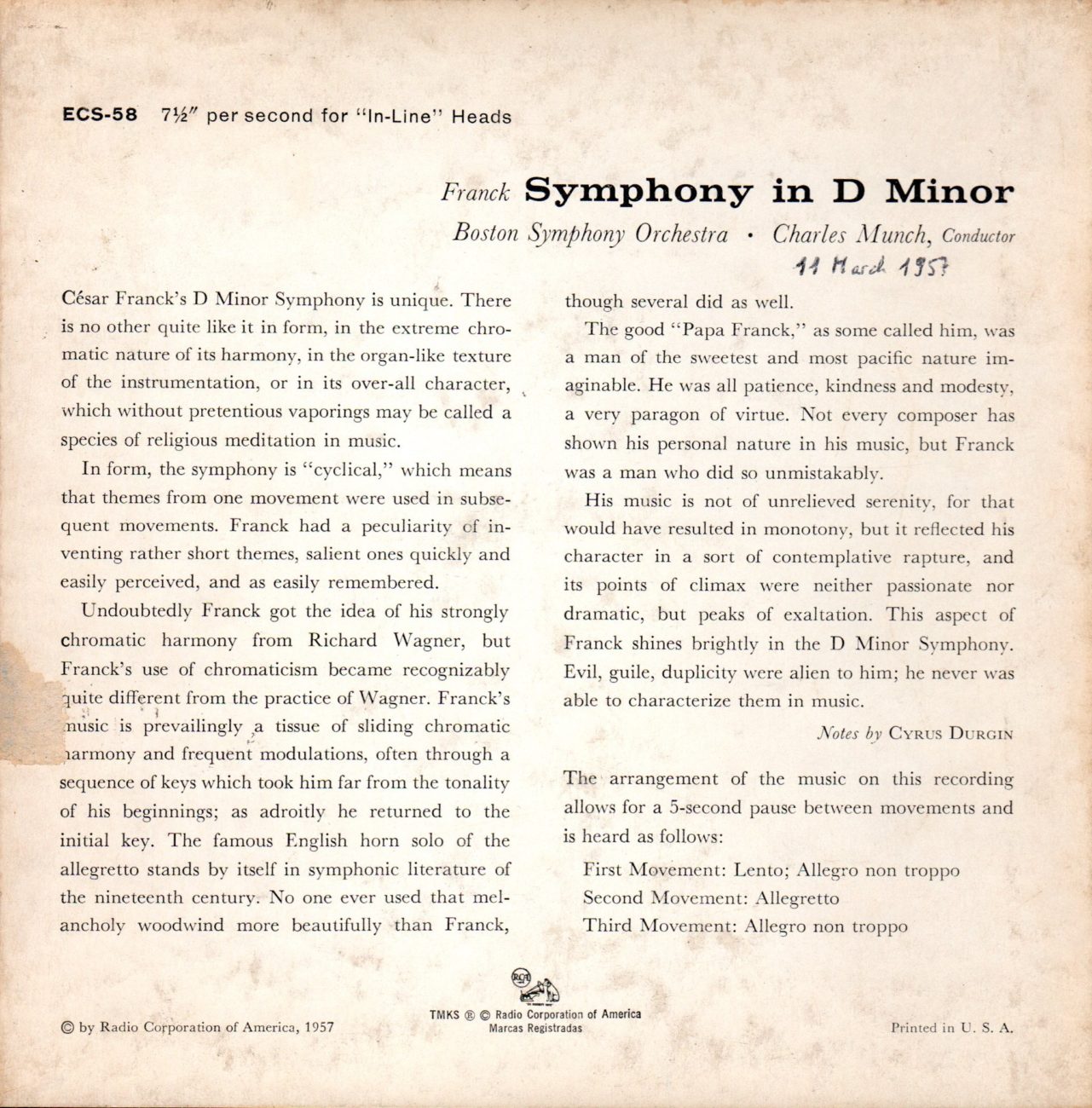
Charles Munch was the conductor for spontaneous inspiration: he would give many different interpretations of a same work. On the other hand, the passion in his concerts was only partly to be found in his commercial discs, often considered as less satisfactory.
His personality led him too to thrilling exaggerations in his concerts, but sometimes objectionable when listening to live recordings. It is the case with Franck’s Symphony, for which we have a concert tape recorded on March 9, 1957, namely two days before the official recording (in Boxset «Charles Munch conducts A Treasury of French Music» 6CD WHRA-6027). Live, Munch spectacularly pushes to the limit the contrasts of tempi and of dynamics, with the paradoxical result of much higher timings*, whereas the studio recording, while keeping the typical Munch’s touch and inspiration, would be a more obvious choice.
1957 brought an improvement to the RCA stereo recordings, with the use of three microphones (left, right and centre) and of a three-track tape. For two-channel reproduction, the signals of the left and right mikes are fed to the respective left and right channels as in normal stereo, and the signal of the central mike is added to both channels. This technique, which was soon to be used also by Columbia, allows to increase the definition and the spatial spreading for a listening that is closer to the concert. It is described in details by Bert Whyte in his review of this tape ECS-58 in «Hi-fi & Music Review» of February 1958 (page 91). To read it, please click HERE.
*Concert: I: 18’; II: 9’53; III:10’28 – RCA Recording: I: 16’55; II: 9’23; III: 10’10
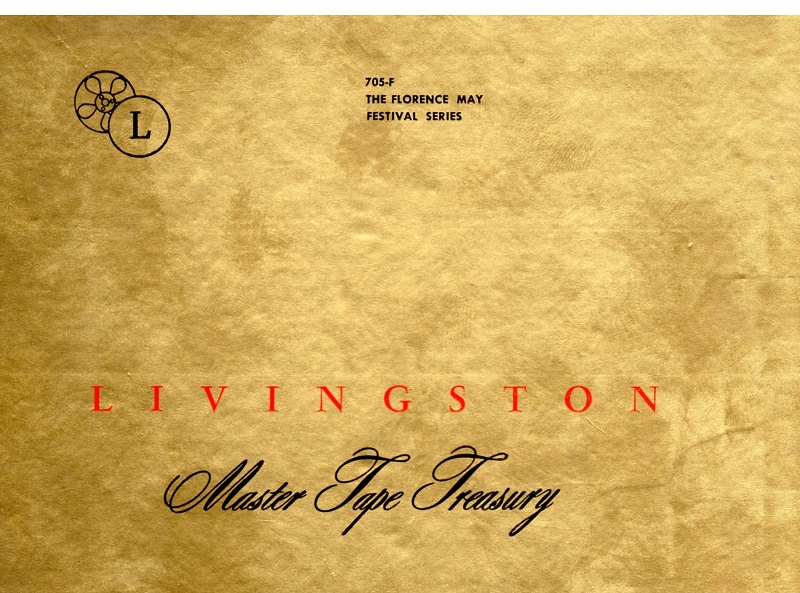
Vittorio Gui – Orchestra del Maggio Musicale Fiorentino
Schubert Symphonie n°8 D759
Rossini Guillaume Tell Ouverture
Brahms Akademische Festouvertüre Op.80
Massenet-Scènes Alsaciennes: n°3 Sous les Tilleuls
Enr/Rec: Teatro Comunale di Firenze – May – June 1953 Stereo
Source: Bande/Tape Audiosphere 701-BN & Livingston 705F
Le Mai Musical Florentin de 1953 (XVI Maggio Musicale Fiorentino) est resté célèbre en raison des représentations de la Medea de Cherubini avec Maria Callas sous la direction de Vittorio Gui.
Fait moins connu, au cours de ce Festival, ont été réalisés les premiers enregistrements stéréophoniques commerciaux en Europe, sous la direction de Vittorio Gui, pour le label américain Livingston fondé par Ched Smiley.
Le directeur artistique de cette production était le chef Hans Wolf (Hamburg 1912- Seattle 2005). Il a étudié notamment avec Heinrich Schenker en 1933 et 1934 et a poursuivi ensuite des études à Vienne. Comme Marcel Prawy dont il était l‘ami, Il s’est engagé dans l’armée américaine en 1943, a obtenu la nationalité américaine et a été envoyé à Vienne au printemps 1945. Avant de s’installer aux Etats-Unis en 1952, il a fait des enregistrements pour le label Remington et un orchestre dénommé «Austrian Symphony Orchestra« (qui était en fait le Niederösterreichisches Tonkünstler Orchester) entre 1950 et février 1952, en tant que chef d’orchestre (Beethoven Symphonie n°5, Brahms Symphonie n°2, Franck Symphonie etc…). Il a également été producteur associé avec Marcel Prawy, pour les enregistrements avec Fritz Busch avec le même orchestre (Haydn Symphonie n°101, Beethoven Symphonies n°3 et 8) pour lesquels l’ingénieur du son était Hans Sachs de la Radio autrichienne RAVAG) et, fait notable avec Vittorio Gui (Mendelssohn: Symphonie n°5 et Ouverture «Les Hébrides», ainsi qu’un disque d’ouvertures).
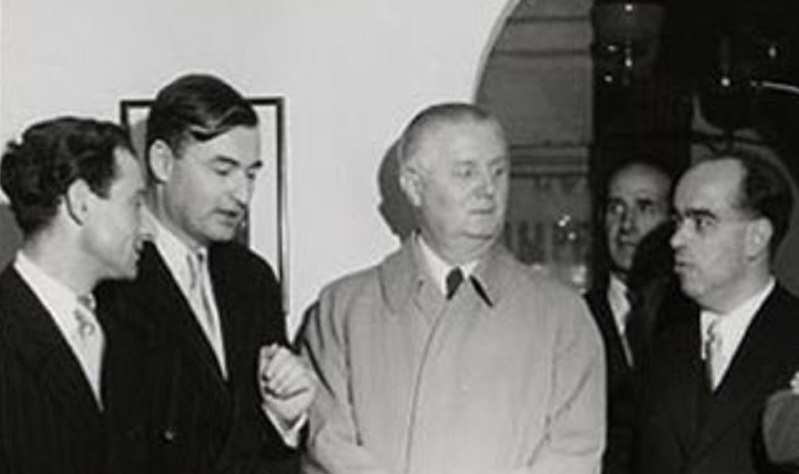
Hans Wolf – Marcel Prawy – Fritz Busch – Hans Sachs – Wien Oktober 1950
Par ailleurs, le label Livingston était à l’époque engagé dans des recherches de stéréophonie expérimentale, notamment avec le concept de disque à double sillon d’Emery Cook, pour lequel Livingston a commercialisé un bras de lecture « Binaural Arm »:
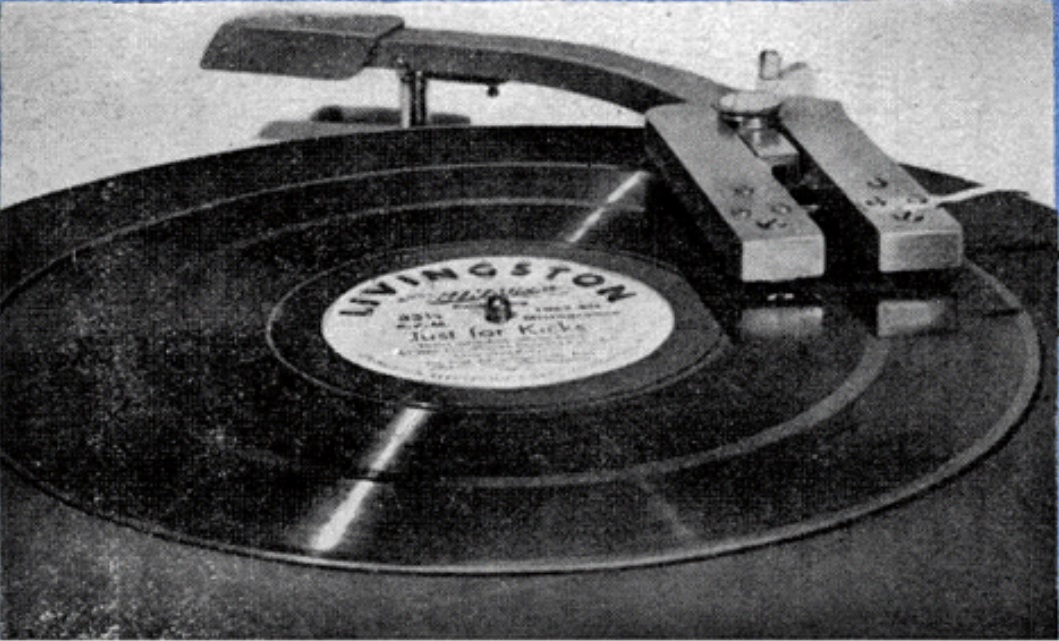
Livingston Binaural Arm
Le nouveau projet de Livingston qui a vu le jour en 1953 était la commercialisation en stéréophonie, sur bandes magnétiques, d’une importante série d’ enregistrements orchestraux faits à Florence sous la direction de Vitorio Gui au cours du Mai Musical Florentin qui a eu lieu entre le 7 mai et le 29 juin 1953. Livingston n’était pas le seul avec un tel projet, mais ses enregistrements orchestraux en stéréo ont précédé ceux d’ AV-Tapes Libraries (Sibelius: Cincinnati SO Thor Johnson enregistré en novembre 1953).
Cinq bandes magnétiques référencées 701 à 705 publiées par Livingston/Audiosphere ont été annoncées dans les numéros de juin et d’août 1954 de la revue Tape Recordings, après avoir fait l’objet au mois de mars d’une présentation au public à Cleveland (Cleveland Chapter 18th Symposium «Stereo Symposium») sous la forme d’émissions radiophoniques FM expérimentales en stéréo.
Lors des séances d’enregistrement à Florence, deux jours ont été consacrés à la mise en place des microphones et à la balance de l’orchestre, le montage des bandes a été réalisé sur place, et les enregistrements ont fait l’objet d’une écoute en vue de leur approbation.

Presentation (Tape Recordings: June 1954)
Dans un article intitulé «Tape makes it easier» paru dans le numéro d’avril 1955 de la Revue «Tape Recordings«, Hans Wolf a dévoilé sa conception personnelle des enregistrements sur bande magnétique et sur le montage, et il a raconté la visite d‘Heinrich Kralik, musicologue et Directeur du département musical de la Radio Autrichienne RAVAG, lors du montage des enregistrements de Vittorio Gui dans une petite salle du Teatro Comunale. Pour le lire, cliquer ICI.
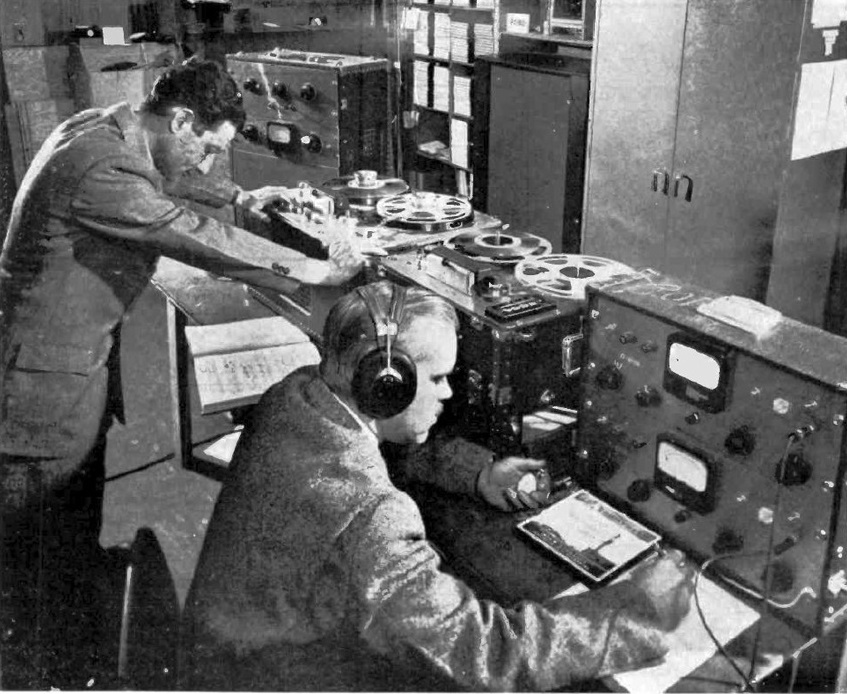
Hans Wolf & Ched Smiley
Les annonces de publications de bandes magnétiques stéréophoniques par de petites firmes (Livingston/Audiosphere et AV Tapes Library) ont créé une forte incitation pour les grands labels et en tout premier lieu RCA qui a annoncé dès juillet 1954 dans la revue High Fidelity sa première publication d’une bande magnétique en stéréo: Strauss Also sprach Zarathustra Chicago SO Fritz Reiner, enregistrement du 6 mars 1954.
Par la suite, les publications pionnières de Livingston sont progressivement tombées dans l’oubli jusqu’à la réédition en 2014 des enregistrements de Vittorio Gui sous le propre label du Festival «Historical Maggio Live» (2CD OF 003).
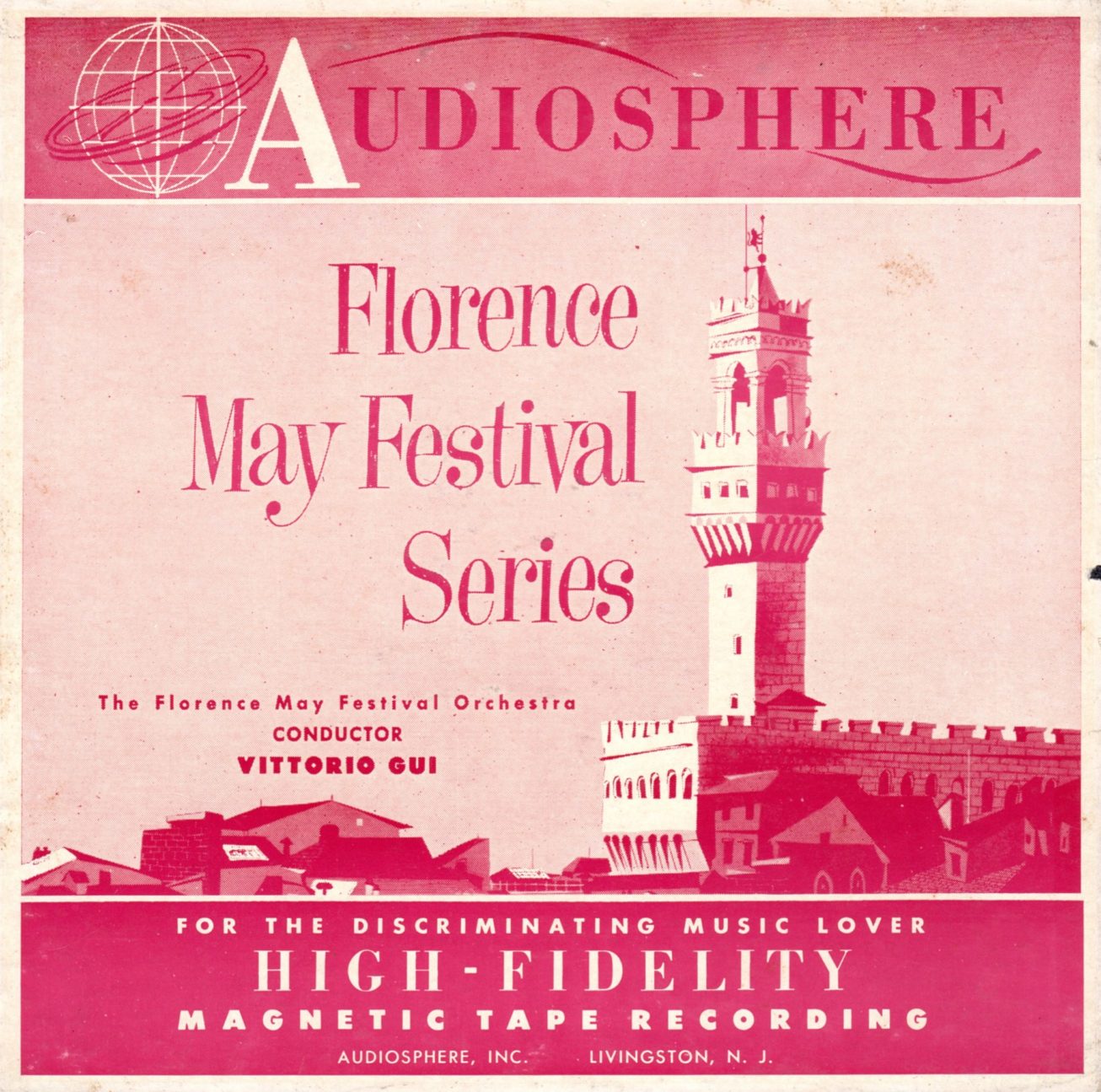
Bande /Tape Audiosphere BN701
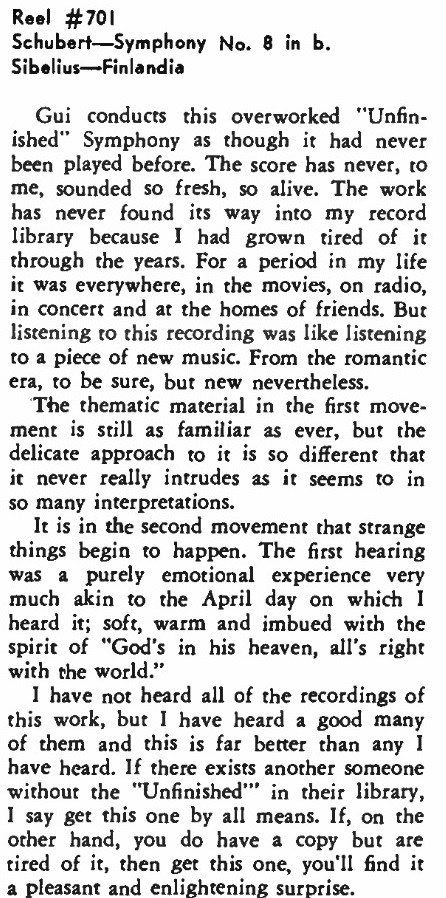

Bande /Tape Livingston 705-F
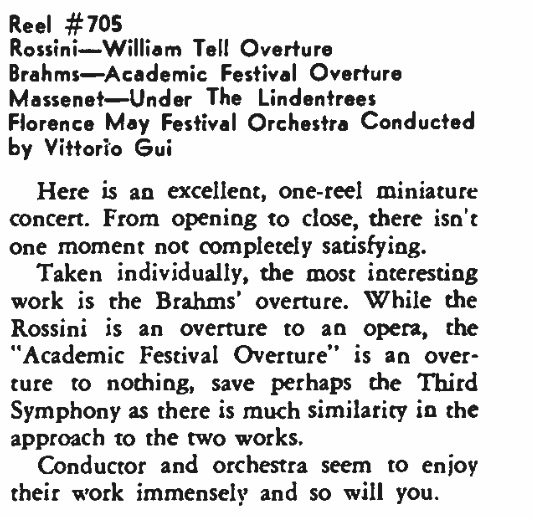
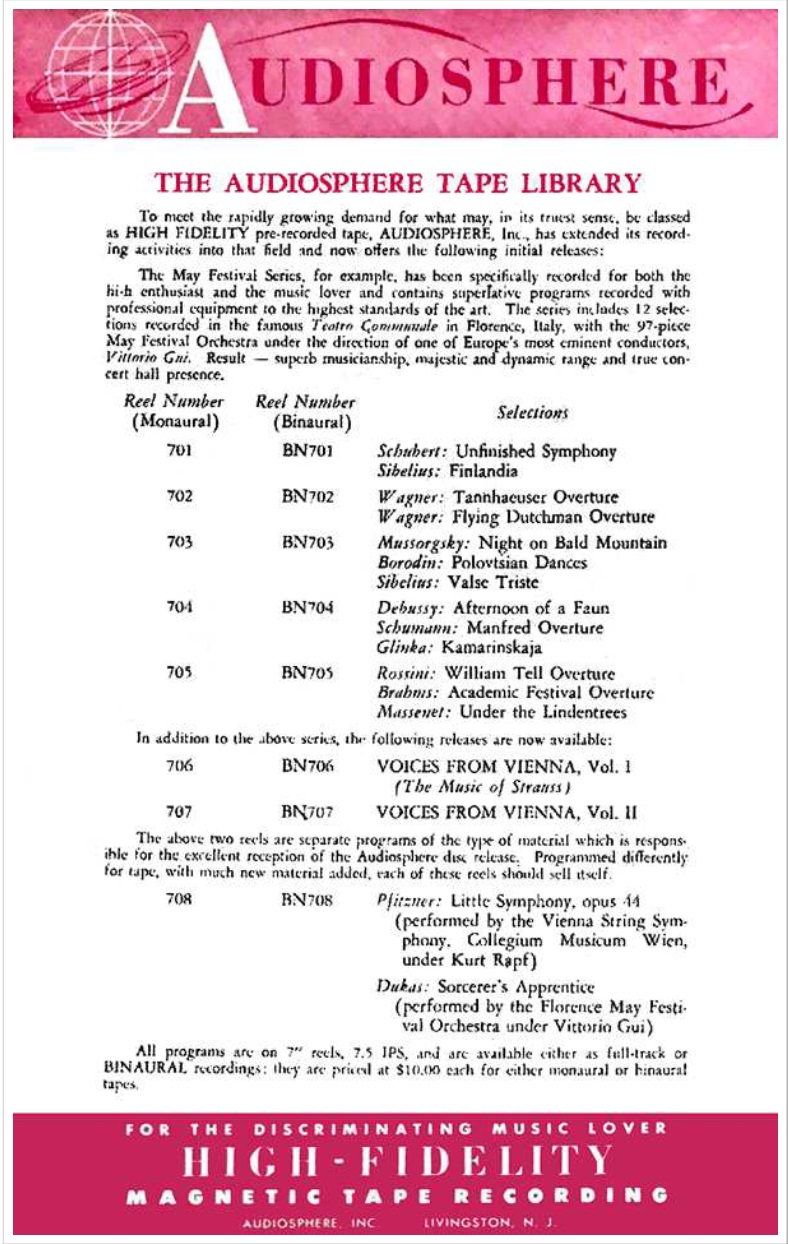
Audiosphere Catalog December 1954
The 1953 Florence May Festival (XVI Maggio Musicale Fiorentino) has remained memorable because of the performances of Cherubini’s Medea with Maria Callas conducted by Vittorio Gui.
But it is much lesser known that during this Festival, the first commercial stereophonic recordings in Europe were made with conductor Vittorio Gui, for the US Livingston label founded by Ched Smiley.
The musical producer was conductor Hans Wolf (Hamburg 1912- Seattle 2005). He studied among others with Heinrich Schenker in 1933 and 1934 and then further studied in Vienna. In the same way as Marcel Prawy who was his friend, he joined the US Army in 1943, became a US citizen and was sent to Vienna in the Spring of 1945. Before settling in the USA in 1952, he made recordings for the Remington label and the so-called «Austrian Symphony Orchestra « (which was in fact the Niederösterreichisches Tonkünstler Orchester) between 1950 and February 1952, as a conductor (Beethoven Symphonie n°5, Brahms Symphonie n°2, Franck Symphonie etc…). He was also the assisting producer to Marcel Prawy, for the recordings with Fritz Busch with the same orchestra (Haydn Symphony n°101, Beethoven Symphonies n°3 and 8) for which the recording engineer was Hans Sachs from the Austrian Radio (RAVAG) and, also worth noting, with Vittorio Gui (Mendelssohn: Symphony n°5 and Overture «Hebriden», as well as a LP comprised of overtures).
On the other hand, the Livingston label was then involved in research in experimental stereophony, especially with Emery Cook’s double groove LP concept, for which Livingston sold a tone arm called « Binaural Arm »:
The new Livingston concept that materialized in 1953 was the commercialization on stereophonic magnetic tapes of an important series of recordings made in Florence under the direction of Vitorio Gui during the May Festival which took place between May 7 and June 29, 1953. Livingston was not the only one with such an idea, but its stereo orchestral recordings were made before those of AV-Tapes Libraries (Sibelius: Cincinnati SO Thor Johnson recorded November 1953).
Five magnetic tapes (Ref: 701 to 705) issued by Livingston/Audiosphere have been announced in the June and August 1954 issues of the review Tape Recordings, just after having been presented to the public in March in Cleveland (Cleveland Chapter 18th Symposium «Stereo Symposium») as experimental stereo FM broadcasts.
Two days of the recording sessions in Florence were used just balancing the orchestra and the tapes were edited and played back on the spot for approval .
In an article titled «Tape makes it easier» published in the April 1955 issue of the review «Tape Recordings«, Hans Wolf unveiled his personal ideas as to recording on magnetic tape and on editing, and he described the unexpected visit of Heinrich Kralik, musicologist and Director of the music department of the Austrian Radio RAVAG, during the editing of Vittorio Gui’s recordings in a small room of the Teatro Comunale. To read it, please click HERE.
The advertised publications of stereophonic magnetic papes by small labels (Livingston/Auduiosphere and AV Tapes Library) generated a strong incentive for the big record companies and in the first place RCA which advertised as early as July 1954 in the review High Fidelity the publication of its first stereo tape: Strauss Also sprach Zarathustra Chicago SO Fritz Reiner, recorded March 6, 1954.
Later on, the Livingston pioneer efforts progressively fell into oblivion until the 2014 re-issue of Vittorio Gui’s recordings by the in-house label «Historical Maggio Live» (2CD OF 003).
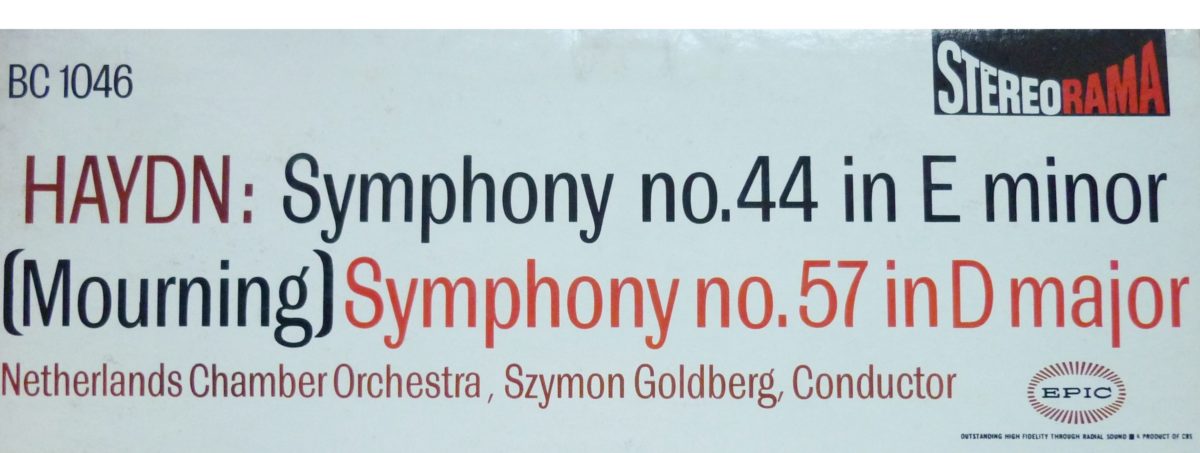
Szymon Goldberg Nederlands Kamerorkest (Netherlands Chamber Orchestra)
Enregistrement /Recording: Amsterdam Concertgebouw
Symphonie n°44: 22 – 23 September 1958
Symphonie n°57: 13 -15 October 1958
Source 33t/LP: Epic BC 1046 (1959)
Szymon Goldberg (1909-1993) a fondé le «Nederlands Kamerorkest» (NKO) en 1955, à la demande du gouvernement néerlandais, et il l’a dirigé jusqu’en 1979. Au cours des années 1970, il en a de plus en plus confié la direction à David Zinman. En dépit de la qualité de cet ensemble et de la longue période au cours de laquelle Goldberg l’a dirigé, peu d’enregistrements commerciaux ont été réalisés. Des enregistrements publics avec le NKO se trouvent fort heureusement dans le coffret Music & Arts CD-1223.
Paru en 1959, le disque Haydn, enregistré à l’origine par Philips, associe de manière pertinente deux des symphonies de la période «Sturm und Drang», avec une première discographique: la symphonie n°57. En ce qui concerne la symphonie n°44 (dite «Funèbre» ou «Trauer»), l’Adagio est, de manière surprenante, placé sur le disque en seconde position et le Menuetto en troisième position. Le texte de la pochette se contente de rapporter que « de récentes investigations conduites en Allemagne et en Autriche parmi les manuscrits semblent indiquer que l’intention de Haydn aurait pu être qu’elles soient jouées dans l’ordre inverse».
Les dates d’enregistrement proviennent de la discographie de Shuichiro Kawai (2012).
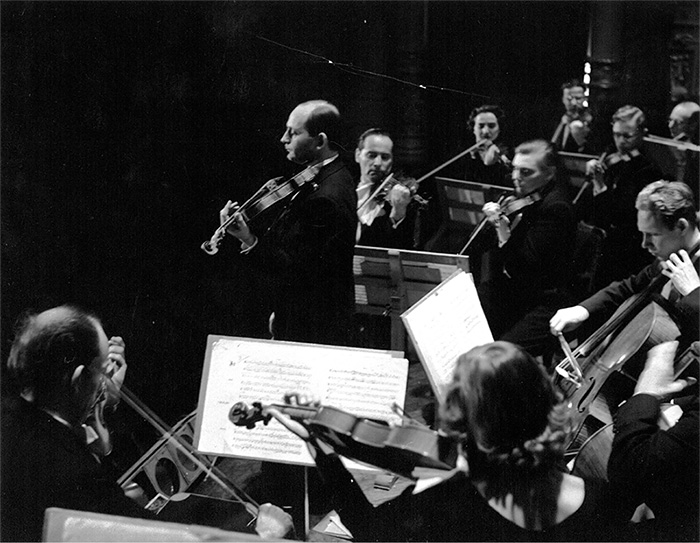

Critique/Review: High Fidelity January 1960
____________
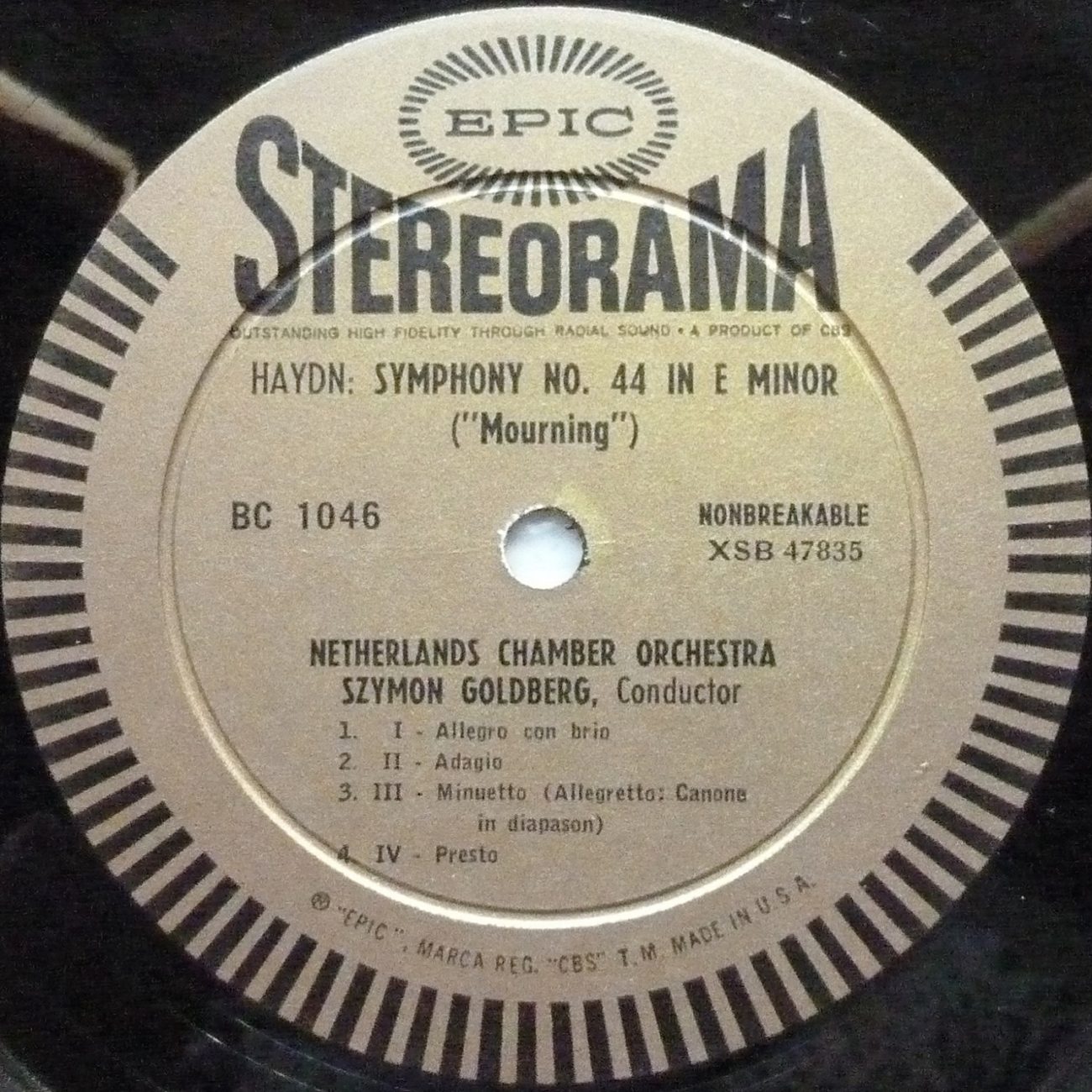

Szymon Goldberg (1909-1993) founded the «Nederlands Kamerorkest» (NKO) in 1955, at the request of the Dutch government and he conducted it until 1979. During the ’70s, David Zinman progressively took over its directorship. In spite of the quality of the Orchestra and of the length of Goldberg’s tenure, the number of commercial recordings is rather small. Live recordings with the NKO are happily found in the Music & Arts boxset CD-1223.
Issued in 1959, the Haydn LP, originally recorded by Philips, wisely couples two of the symphonies of the «Sturm und Drang» period, with a Premiere on disc: Symphony n°57. On the LP, as to the Symphony n°44 («Mourning» or «Trauer»), the Adagio is surprisingly the second movement. and the Menuetto is the third movement. The liner’s notes merely mention that « recent investigations of manuscripts in Germany and Austria would seem to indicate that Haydn may have intended to play them in reverse order».
The recording dates are from the discography by Shuichiro Kawai (2012).

Lauritz Melchior & Helen Traubel – Wagner
Lohengrin Act III: Duo « Das süsse Lied verhallt » – « In fernem Land » (Lohengrin)
Tristan und Isolde: Act I « Wie lachend sie mir Lieder singen » (Isolde) – Act II Duo « O sink hernieder »
Eugene Ormandy Hollywood Bowl Symphony Orchestra (Los Angeles Philharmonic)
Hollywood Bowl August 26, 1948
Source: 33t./LP VOCE-94
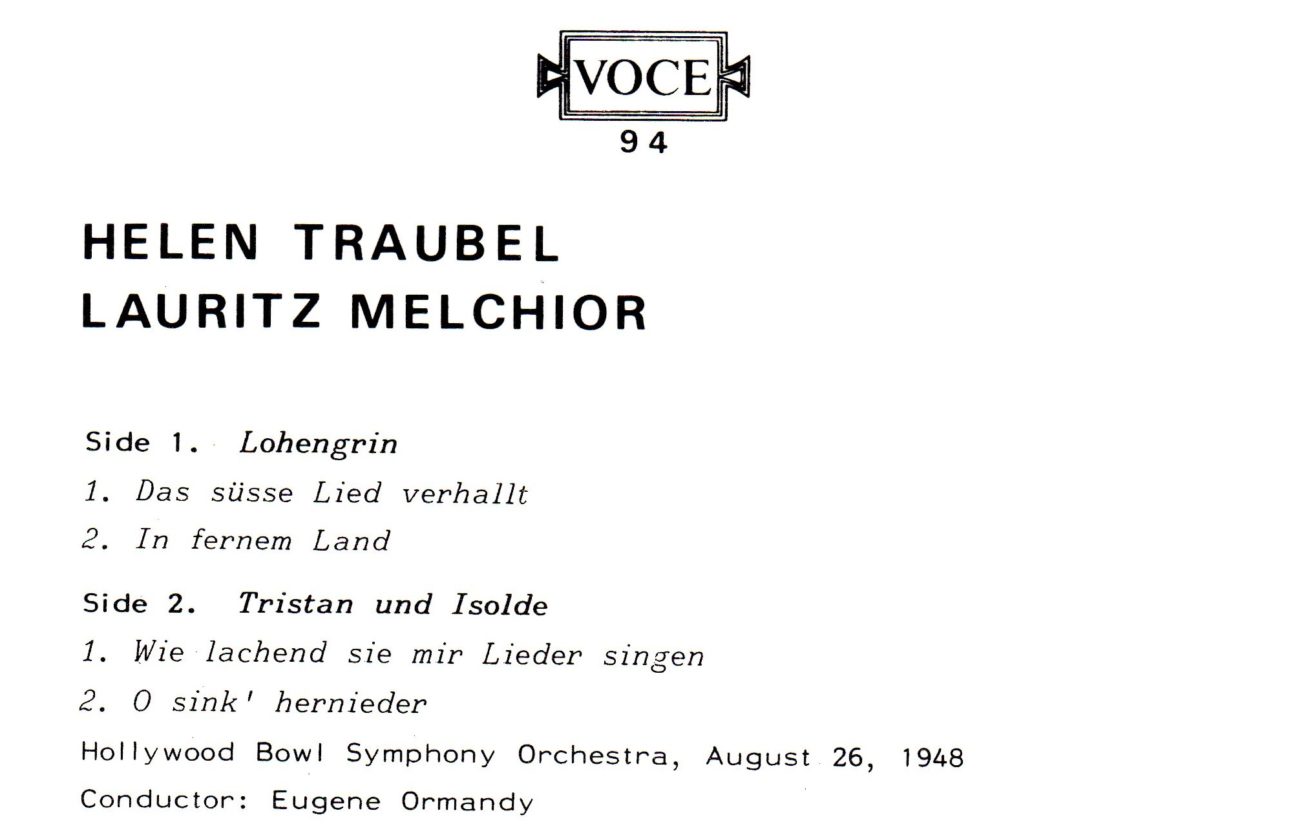
Hollywood Bowl, inauguré il y a tout juste 100 ans, le 11 juillet 1922, est le tout premier site américain dédié aux grands concerts populaires en plein air, et un des plus grands, avec sa jauge de 17.000 places et sa célèbre conque acoustique à la forme caractéristique, un quart de sphère.
De nombreux programmes y sont donnés tous les étés, notamment dans le cadre de la série « Symphony under the Stars ».
En juillet 1948, Eugene Ormandy a été nommé Directeur Musical du Hollywood Bowl et le 29 juillet, il a inauguré ses nouvelles fonctions avec la Première sur la côte Est des États-Unis de la Huitième de Mahler.
Le mémorable concert Wagner du 26 août nous présente Melchior et Traubel dans une forme vocale absolument remarquable, et montre chez Traubel des qualités expressives représentant son évolution musicale depuis 1941, quand elle a été appelée à assurer au MET les grands rôles de Flagstad rentrée en Europe. Traubel a chanté le rôle d’Isolde pour la première fois de sa carrière le 4 décembre 1942, et elle a chanté le rôle d’Elsa pour la première fois au MET le 20 décembre 1944.
On notera que ce concert est disponible en CD chez Andromeda, à partir d’une source qui comporte les annonces radiophoniques de l’AFRS (Armed Forces Radio Service) et les applaudissements, mais à l’écoute, on constate une très importante compression de dynamique, et aussi un filtrage important du bruit de fond. Au contraire, la source qui a servi pour le disque VOCE, même si elle ne comporte pas d’annonce radio, et si les applaudissements sont tronqués, ne souffre pas de compression de dynamique, ni d’un tel filtrage, et reproduit les voix des deux protagonistes avec leur richesse de timbre, leur ampleur et leur projection.
Les critiques des représentations données dans le cadre du MET avec Melchior et Traubel confirment ce que révèle l’écoute du concert: l’un et l’autre, en cette année 1948, étaient à un sommet vocal et interprétatif, même si la lecture des critiques montre aussi que l’état vocal de Melchior était variable d’une soirée à l’autre.
Concernant la représentation de Tristan und Isolde du 3 janvier 1948 dirigée par Fritz Busch,, le NY Herald Tribune écrivait: « Miss Traubel n’a jamais rendu les exigences de la musique de son rôle avec une réalisation aussi complète de ses facettes émotionnelles toujours changeantes. D’innombrables et souvent envoûtantes subtilités dans les nuances et dans la coloration du timbre illuminaient son rendu du texte, et son vocalisme, notamment dans les passages où sa belle voix de soprano n’était pas utilisée à pleine puissance, était un ravissement pour l’oreille. Elle n’avait jamais exprimé la tendresse d’Isolde de manière si touchante. Son chant lors de cette représentation ne sera pas oublié de sitôt. Le signataire n’a jamais entendu Mr. Melchior restituer le rôle tout aussi ardu de Tristan de manière aussi éloquente. Le ténor était dans une forme exceptionnelle tout au long de l’après-midi, et dans l’ exigeant troisième acte, à la fois son chant et son jeu de scène étaient d’une émotion poignante « .
Au sujet de la représentation de « Die Walküre » du 14 avril 1948 donnée à los Angeles par le MET sous la direction de Fritz Stiedry, le Los Angeles Times écrivait: « Mr. Melchior était dans une voix meilleure qu’on ne l’avait entendu depuis des années. Les sons étaient résonnants et clairs, dépourvus du caractère barytonnant et rauque qui avait parfois déparé leur émission, alors que sa conception du rôle avait toute sa dignité et toute son autorité incomparables« .
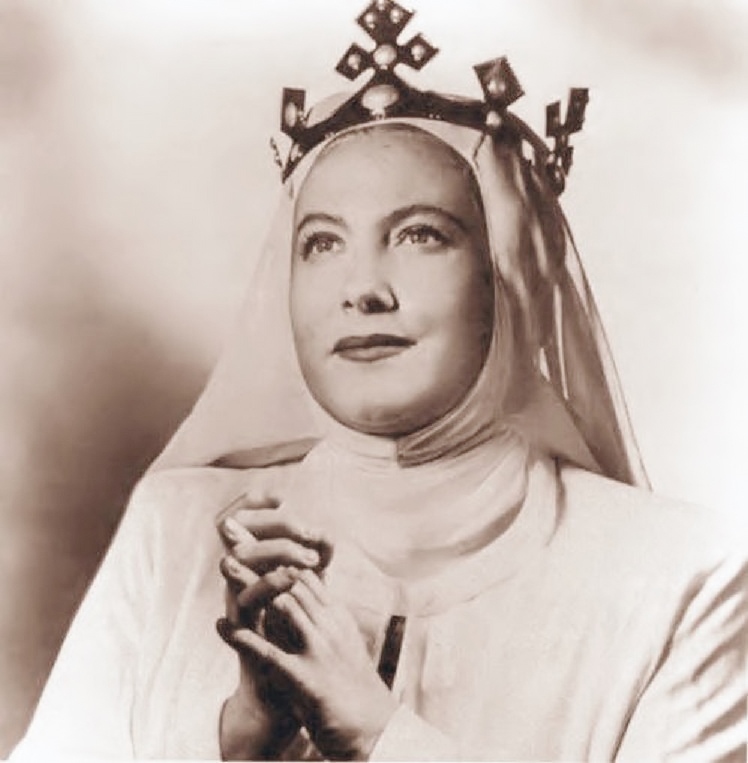
Helen Traubel – Elsa
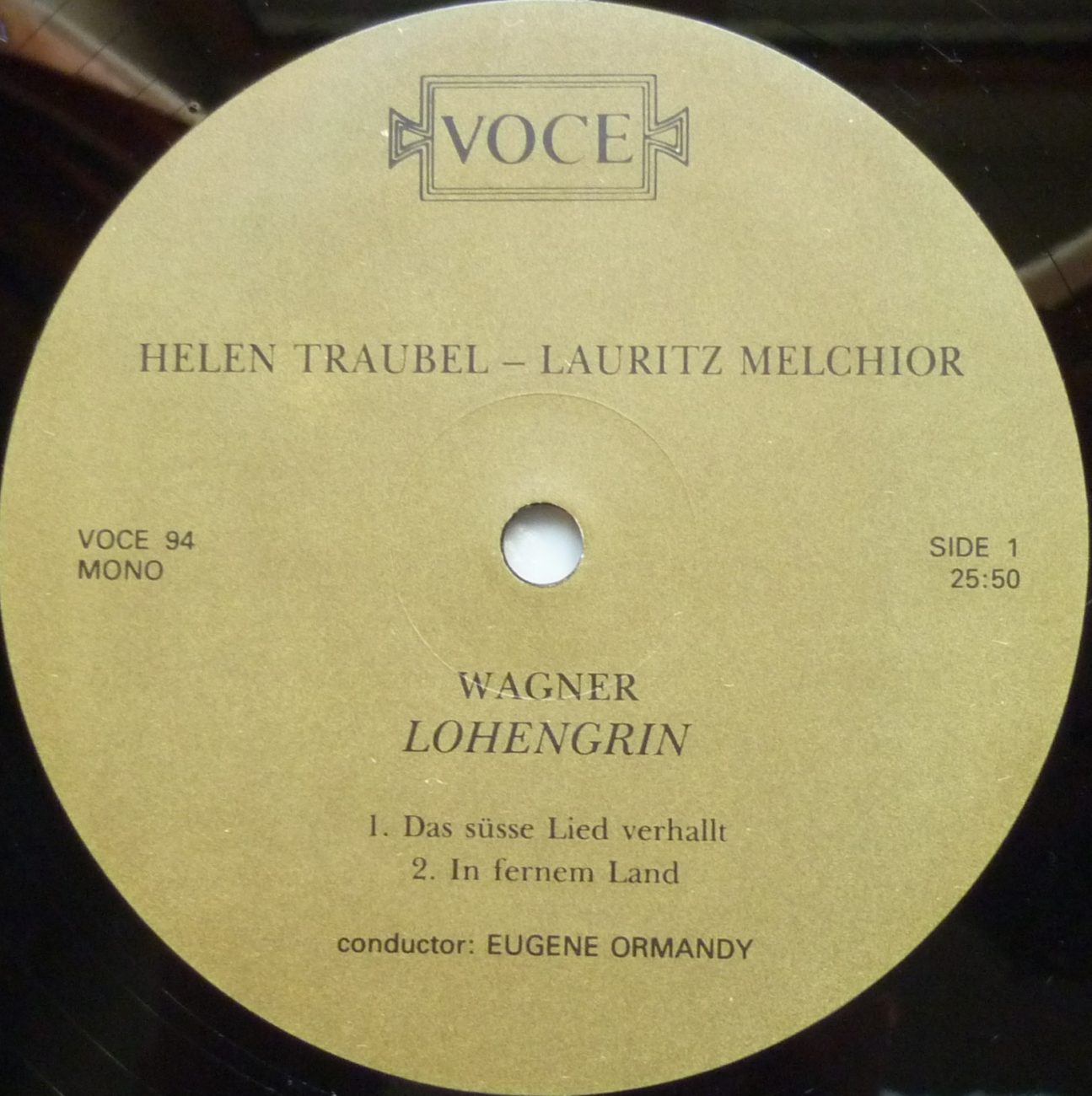
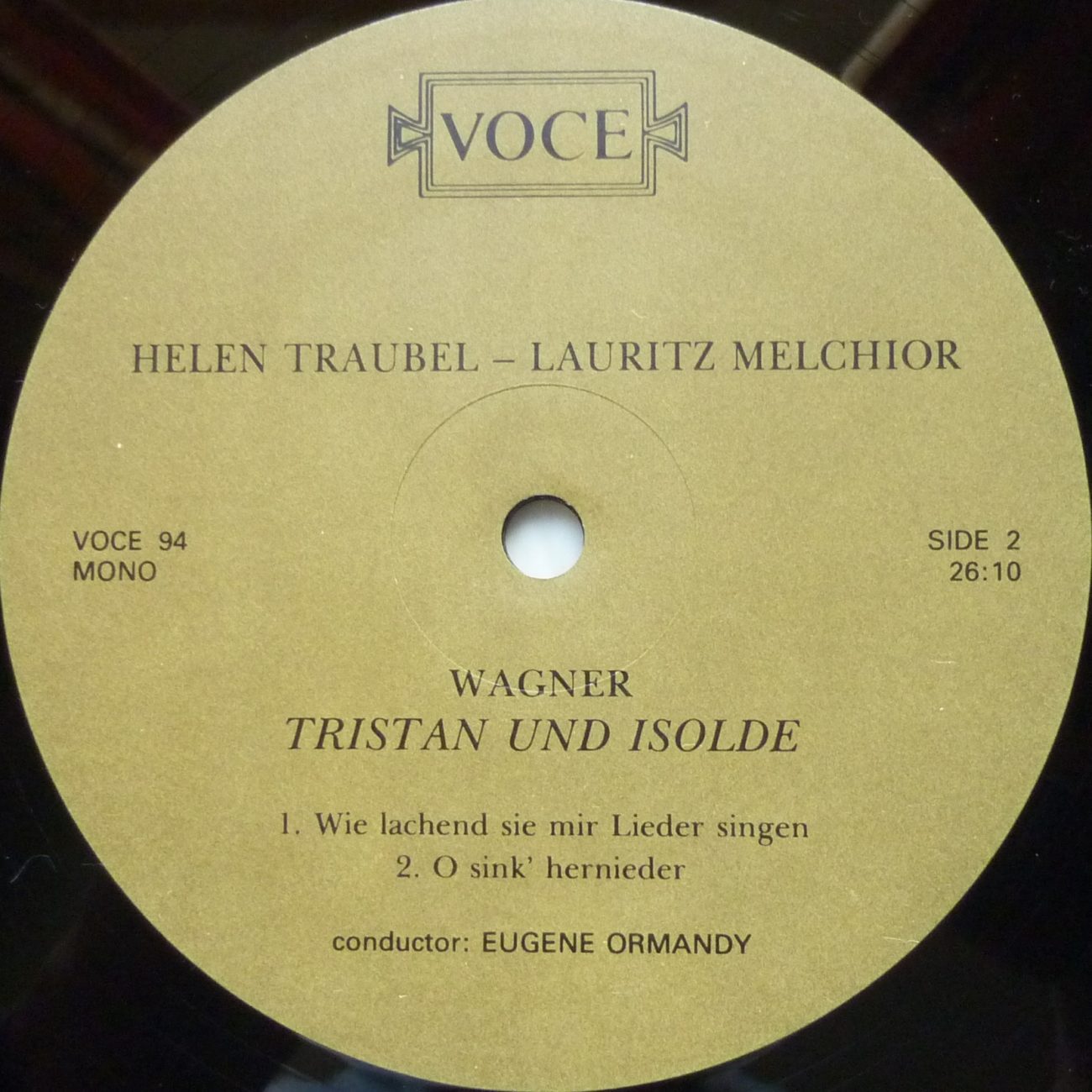
Hollywood Bowl, inaugurated almost one century ago to the day, on July 11, 1922, is the very first US site dedicated to open air concerts, and one of the largest, with a capacity of about 17,000 seats, and its renowned acoustic shell with its caracteristic quarter sphere shape.
Many programs are performed there every summer, among others in the series « Symphony under the Stars ».
In July 1948, Eugene Ormandy was appointed Music Director of Hollywood Bowl and on July 29, he started his tenure with the Premiere of Mahler’s Eighth on the US West Coast.
The memorable Wagner concert of August 26 displays Melchior and Traubel in a truly remarkable vocal condition, and shows in Traubel an expressivity which mirrors her musical evolution since 1941, when she was called to sing at the MET the main parts of Flagstad who went back to Europe. Traubel sung the part of Isolde for the first time in her career on December 4, 1942 and she sang the part of Elsa for the first time at the MET on December 20, 1944.
A recording of this concert is available on CD (Andromeda), from a source that comprises all the Radio announcements by AFRS (Armed Forces Radio Service) and the applause, but when listening, one notices a very important dynamic compression, and also an important use of noise reduction. On the contrary, the source used for the VOCE LP, even if the announcements are missing and the applause truncated, is devoid of dynamic compression and of noise reduction, and the voices of both singers are reproduced with their richness of tone, their volume and their projection.
The reviews of performances given at the MET with Melchior and Traubel confirm what listening to the concert reveals: both, in this year 1948, were at a pinnacle both vocally and interpretatively, even if reading the reviews also shows that Melchior’s vocal condition might vary from one evening to the other.
As to the « Tristan und Isolde » performance of January 3, 1948 under Fritz Busch, the NY Herald Tribune wrote: « Miss Traubel has never delivered the exacting music of her role with such full realization of its ever-shifting emotional facets. Innumerable, often haunting subtleties of nuance and tone color illuminated her treatment of the text, and much of her vocalism, especially in passages where her fine soprano voice was not utilized at full strength, ravishing the ear. Never has she expressed Isolde’s tenderness so affectingly. Her singing on this occasion will not soon be forgotten. Nor has this writer ever heard Mr. Melchior give a more telling account of Tristan’s no less arduous role. The tenor was in exceptionnally good form throughout the afternoon and in the taxing third act both his singing and acting were poignantly moving ».
As to the « Die Walküre » performance of April 14, 1948 given in Los Angeles by the MET under Fritz Stiedry, the Los Angeles Times wrote: « Mr. Melchior was in better voice than we heard him in years. The tones were ringing and clear, with none of the baritonal huskiness that has sometimes marred their production, while his conception of the role had all his incomparable dignity and authority ».
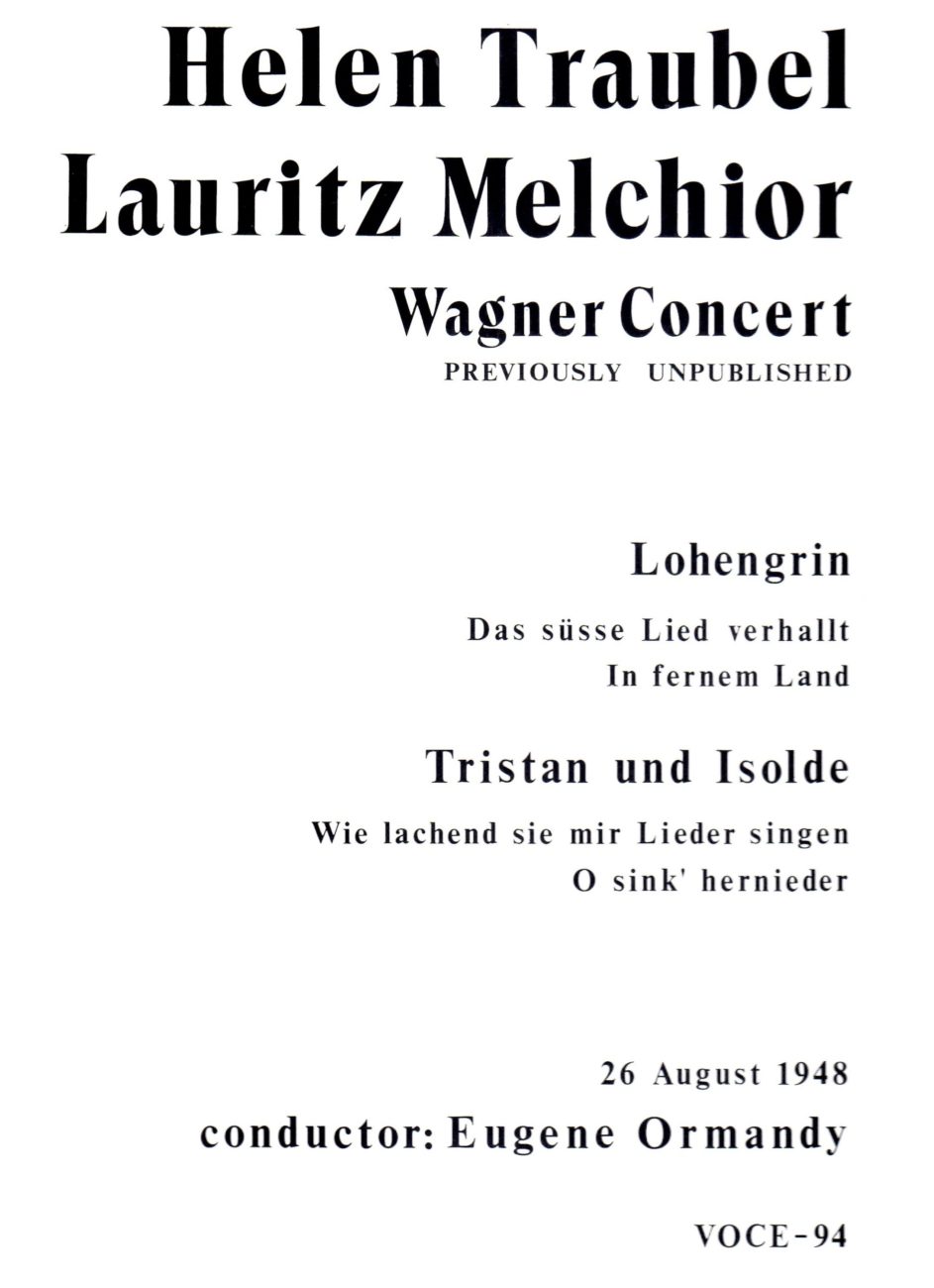
Les liens de téléchargement sont dans le premier commentaire. The download links are in the first comment.
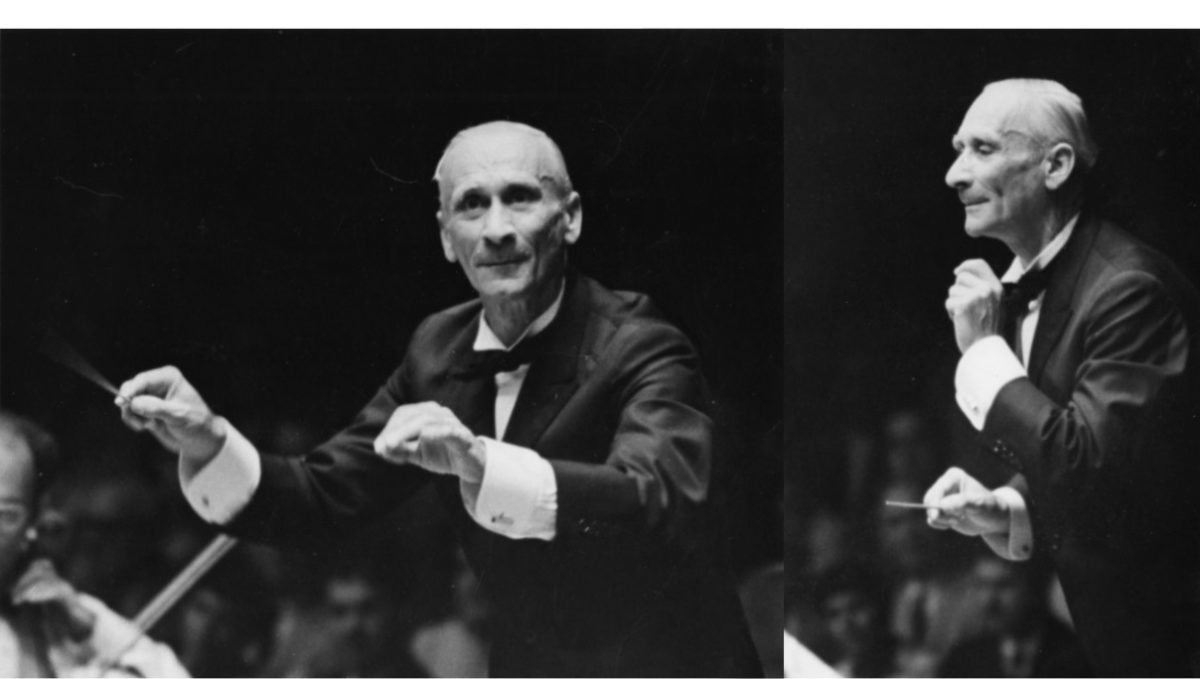
Karel Ančerl – Boston Symphony Orchestra (BSO)
Berkshire Festival – Tanglewood Shed
Gluck Iphigénie en Aulide Ouverture – Dvořák Symphonie n°8 Op.88 August 17, 1968
Smetana Ma Vlast (Vysehrad, Vltava, Sarka) August 8, 1969
Source: Bande/Tape 19 cm/s / 7.5 ips
Karel Ančerl n’a dirigé que trois concerts avec le BSO, à chaque fois à Tanglewood au cours du Festival d’été (Berkshire Festival) en 1968, 1969 et 1972.
Le concert du 17 août 1968 devait à l’origine être donné par Charles Munch avec au programme l’intégrale de Roméo et Juliette de Berlioz qu’il avait dirigée à Boston la même année les 19 et 20 janvier:
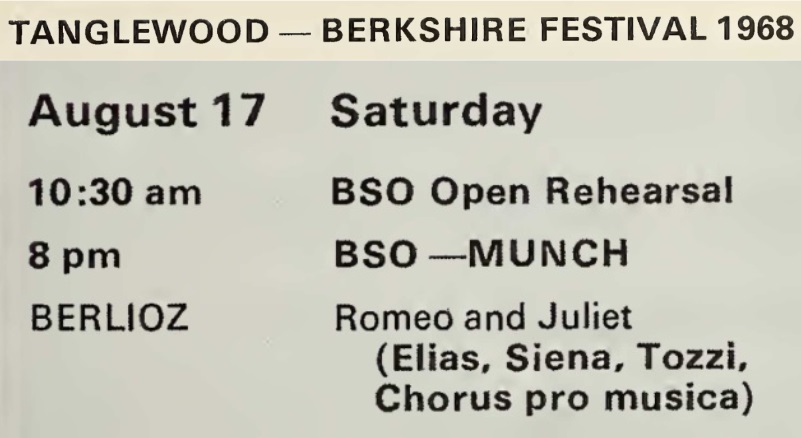
En 1967, Munch a fondé l’Orchestre de Paris sur la base de l’ancienne Société des Concerts du Conservatoire. Entre le 14 novembre 1967, date du concert inaugural du nouvel orchestre et le 23 mars 1968, il a dirigé 4 programmes dont chacun a été joué à cinq reprises. Des séances d’enregistrement avec l’Orchestre de Paris ont eu lieu du 23 au 28 octobre 1967 (Berlioz, Honegger) et les 8 et 12 janvier 1968 (Brahms), mais aussi avec l’Orchestre National de l’ORTF les 10 et 16 février 1968 (Debussy).
Munch, malade, n’a pu assurer la tournée en URSS de l’Orchestre de Paris du 14 au 29 avril 1968, ni les concerts prévus en juillet au Festival d’Aix-en-Provence, et il a aussi annulé ses prestations du mois d’août avec les orchestres de Boston et de Cleveland.
Il n’est revenu au pupitre de son nouvel orchestre qu’en septembre pour des enregistrements d’œuvres de Ravel (21 septembre – 3 octobre 1968) et trois concerts les 9, 10 et 12 octobre, avant de partir pour la fatale tournée d’octobre-novembre au Canada, aux États-Unis et au Mexique. Au cours de cette tournée, il donnera son dernier concert à Boston le 23 octobre.
Pour le concert du 17 août 1968 avec le BSO, Ančerl, qui, aux États-Unis, devait initialement diriger seulement deux concerts avec l’Orchestre de Cleveland au tout nouveau Blossom Music Festival (23 & 24 août, avec notamment les trois œuvres programmées à Boston), a quitté une semaine plus tôt que prévu la Tchécoslovaquie, de sorte qu’il a échappé à l’invasion de son pays le 21 août.
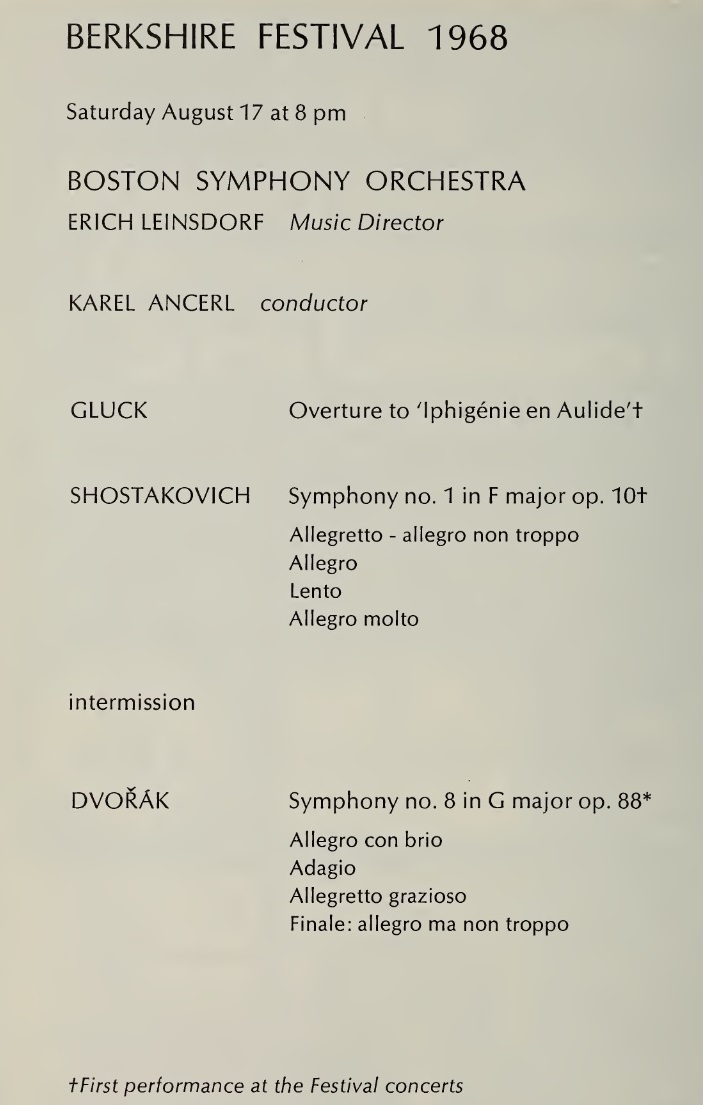
Ančerl a été ré-invité l’année suivante à Tanglewood (Berkshire Festival) pour diriger le 8 août 1969 la Première audition intégrale par le BSO du cycle Ma Vlast de Bedřich Smetana:
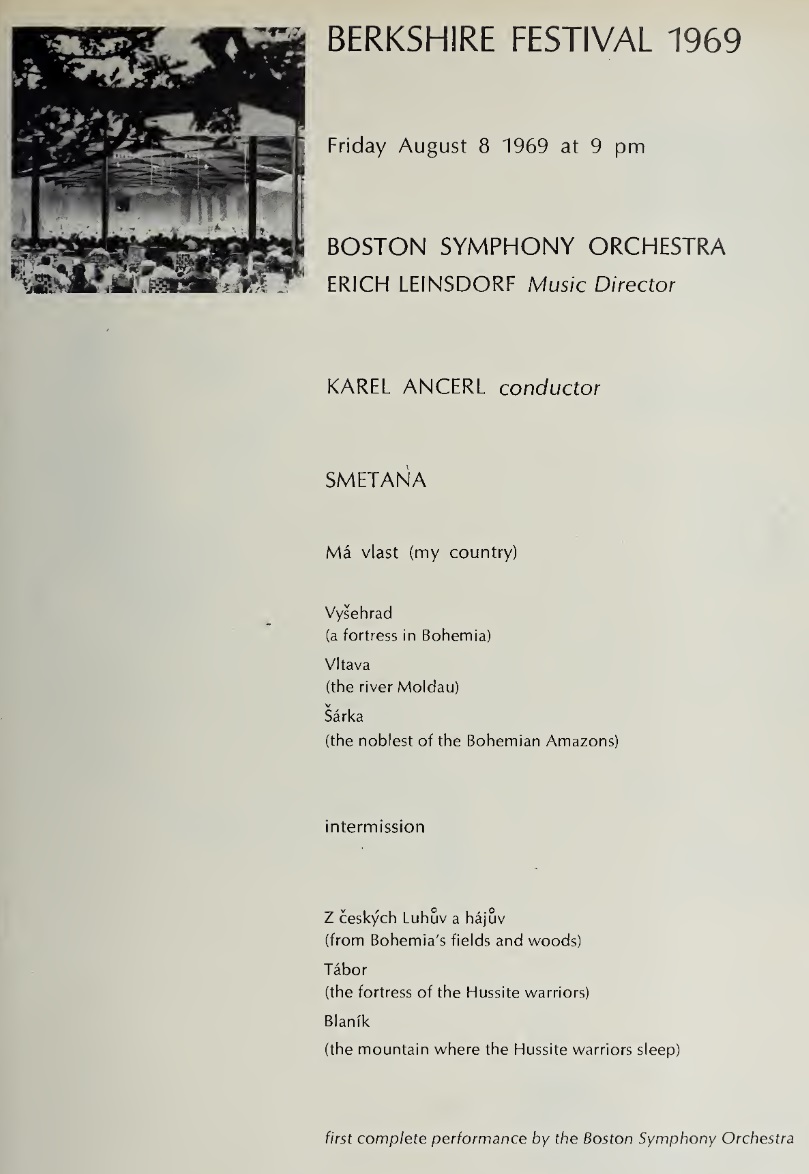
Avant ce concert, il a dirigé en juillet de nouveau deux concerts (10 & 12 juillet) avec l’Orchestre de Cleveland au Blossom Music Festival, ainsi que trois concerts (21, 22 & 24 juillet) avec l’Orchestre de Philadelphie (Robin Hood Dell). Ensuite, au mois d’août, il a donné neuf concerts d’été (12 – 29 août) avec le New-York Philharmonic.
De son vivant, Ančerl n’a pas été considéré à sa juste valeur par la presse américaine, surtout la presse new-yorkaise qui le considérait comme un chef « compétent et expérimenté », mais un peu réservé. Cependant, ces extraits de ces deux superbes concerts avec le BSO ne sauraient confirmer de telles opinions. Ils montrent une affinité aussi immédiate que profonde entre lui et le BSO, que le contexte dramatique du concert de 1968 semble renforcer.
Malheureusement, la seconde partie du concert triomphal de 1969 est rendue difficilement audible à cause d’un de ces violents orages d’été déjà fréquents en Nouvelle-Angleterre sur les monts Berkshire.
Il est étonnant qu’Ančerl, qui a ainsi assuré la première audition de Ma Vlast par le BSO, n’ait pas été invité pour redonner cette œuvre à Boston. Mais l’orchestre avait déjà pour projet de la faire diriger et enregistrer en 1971 par Rafael Kubelik dans le cadre de son contrat avec DGG. Et Ančerl, qui, comme annoncé en mars 1968, avait signé un contrat pour devenir le directeur musical de l’Orchestre de Toronto à partir de la saison 1969/70, notamment pour se mettre à distance de démarches en cours à Prague en vue de son remplacement par Kubelik à la tête du Philharmonique Tchèque, a ainsi retrouvé un problème analogue à Boston, mais pour de toutes autres raisons.
La salle dénommée « Tanglewood Shed » (« hangar ») où sont donnés les concerts symphoniques du Berkshire Festival a été construite en 1938 par Eli Saarinen. Il s’agit d’une structure en acier sur piliers, en forme de triangle ayant un côté curviligne, avec des rangs de sièges disposés en arc de cercle (5100 places), et ouverte sur les côtés et sur l’arrière. Elle donne sur une vaste pelouse qui permet de doubler le nombre de spectateurs. La qualité remarquable de son acoustique, que l’on perçoit nettement dans les enregistrements qui ont à la fois de la largeur et de la profondeur, est due à une structure très innovante pour l’époque composée de panneaux réflecteurs placés au dessus de l’orchestre et d’une partie du public, le « Talbot Canopy », installé en 1959 pour remplacer la classique « conque acoustique » qui existait jusque là.
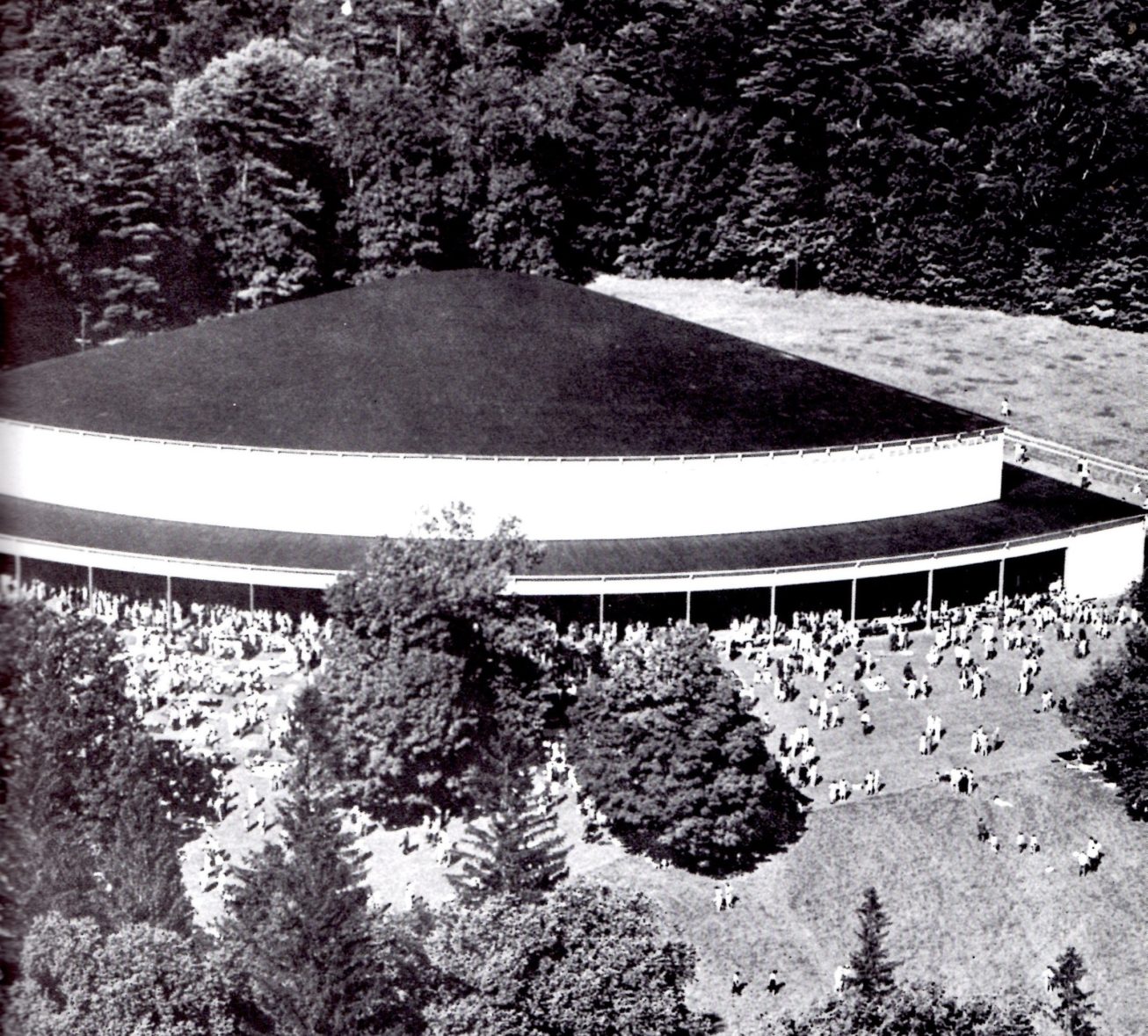

Tanglewood Shed
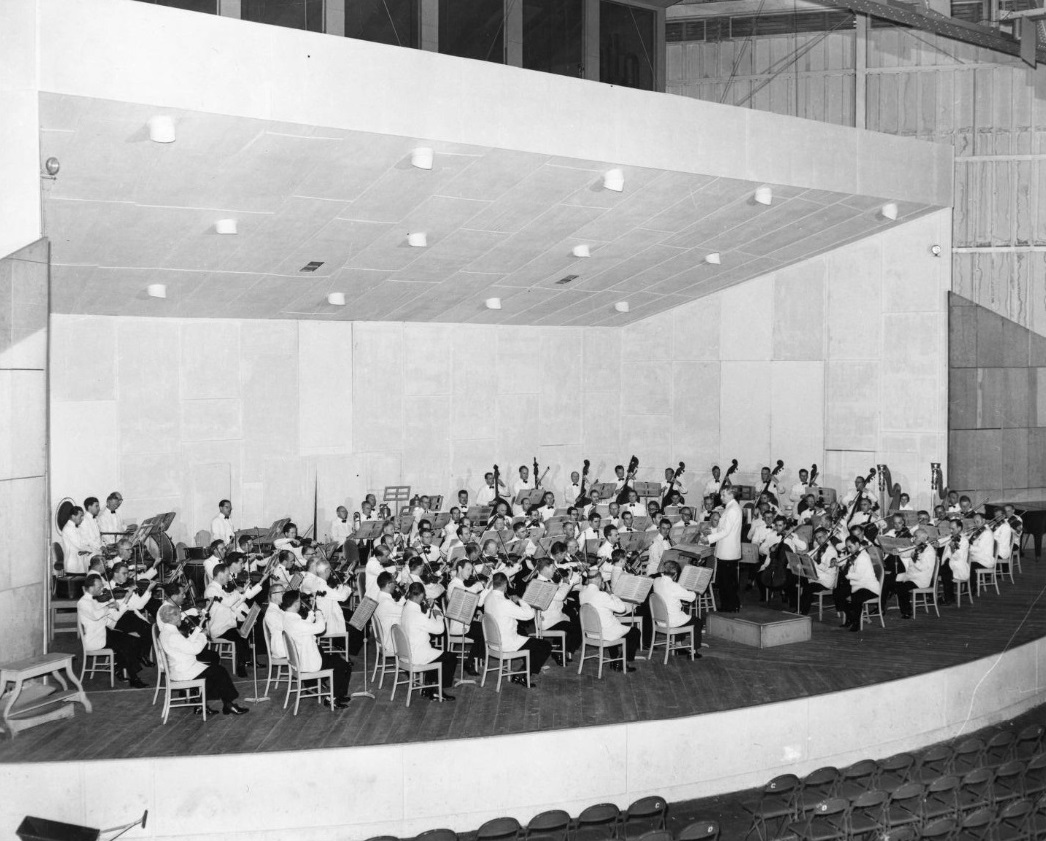
Munch BSO 1951 Acoustic Shell / Conque Acoustique

Munch BSO 1959 – « Talbot Canopy »
______________
Karel Ančerl conducted only three concerts with the BSO, each time in Tanglewood during the summer Festival (Berkshire Festival) in 1968, 1969 and 1972.
The concert of August 17, 1968 was scheduled to be conducted by Charles Munch with a complete performance of Berlioz’s Roméo et Juliette which he already conducted that same year in Boston on January 19 and 20.
In 1967, Munch founded the « Orchestre de Paris » on the basis of the old « Société des Concerts du Conservatoire ». Between Entre November 14, 1967, date of the inaugural concert of the new orchestra and March 23, 1968, he conducted four programs, each of which was performed five times. Recording sessions took place with the « ‘Orchestre de Paris » from October 23 to 28, 1967 (Berlioz, Honegger) and on January 8 and 12, 1968 (Brahms), but also with the « Orchestre National de l’ORTF » on February 10 and 16, 1968 (Debussy).
Munch, who fell ill, was not able to conduct neither during the USSR Tour of the « ‘Orchestre de Paris » from April 14 to 29, 1968, nor the scheduled July concerts at the « Festival d’Aix-en-Provence », and he also cancelled his August concerts with the Boston and the Cleveland orchestras.
It was not until September that he came back to his new orchestra for studio recordings of works by Ravel (September 21 – October 3, 1968) and three concerts in October 9, 10 and 12, before leaving for the valedictory October- November Tour in Canada, USA, and Mexico. Durind this Tour, he conducted his last Boston concert on October 23.
For the August 17, 1968 concert with the BSO, Ančerl, who, in the US, was initially scheduled to conduct only two concerts with the Cleveland Orchestra at the newly created Blossom Music Festival (August 23 & 24 with among others the three same works programmed in Boston), left Czechoslovakia one week earlier than scheduled, well before the August 21 invasion of his country.
Ančerl was re-invited the following year () in Tanglewood (Berkshire Festival) to conduct on August 8, 1969 the first complete performance by the BSO of Bedřich Smetana’s Cyle Ma Vlast.
Before this, in July, he conducted again two concerts (July 10 & 12) with the Cleveland Orchestra at the Blossom Music Festival, and also three concerts (July 21, 22 & 24 July) with the Philadelphia Orchestra (Robin Hood Dell). Then, in August, he gave nine summer concerts ( August 12 – 29) with the New-York Philharmonic.
During his lifetime, Ančerl has not been fully recognized by the US critics, especially in New-York where he was rated as a « competent and experienced », but somewhat reserved conductor. However, these excerpts from these two great concerts are likely to challenge such opinions. They show between him and the BSO an affinity both immediate and deep, which the dramatic context of the 1968 concert seems to increase.
Unfortunately, the second half of the 1969 triumphal concert is almost unlistenable due to one of these violent summer thunderstorms that were already quite frequent in New-England over the Berkshires.
It is astonishing that Ančerl, who was in charge of the first performance of Ma Vlast by the BSO, has not been invited to conduct it in Boston. But the orchestra schedule was already to have it performed and recorded in 1971 Rafael Kubelik within the terms of the contract with DGG. And Ančerl, who, as announced in March 1968, signed an agreement to become music director of the Toronto Orchestra from the 1969/70 season, a.o. to free himself from the steps being taken in Prague to replace him by Kubelik as permanent conductor of the Czech Philharmonic Orchestra, thus met a similar problem in Boston, but for quite different reasons.
The venue named « Tanglewood Shed » where the symphony concerts of the Berkshire Festival take place was built in 1938 by Eli Saarinen. It is a metal structure on pillars, shaped as a triangle with a curved side, with seat rows arranged in arc of circle (5100 seats), and open on its sides and on the back on a large lawn to double the number of spectators. Its remarkable acoustic quality, which may be clearly heard on the recordings which have both width and depth, is due to a then very innovative structure comprised of reflective panels above the orchestra and part of the public, the « Talbot Canopy », installed in 1959 to replace the already existing « Acoustic Shell ».
